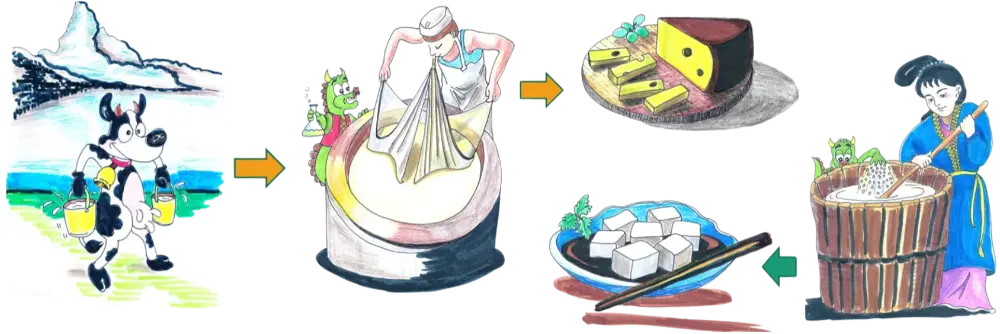The China Switzerland Connection aims to promote friendship, mutual understanding and cultural exchange between Switzerland and China. As the old saying goes: "The way to the heart is through the stomach". One of the best ways to understand and appreciate a foreign culture is to immerse yourself in its culinary delights and secrets. This is no different in China. If you don't know the enormous variety of Chinese cuisine, you don't know the country.
It has always been our desire to convey Chinese culture in a simple and vivid way. We recently published the book "Dali Long Asks. A comic series about Switzerland and China" by Yelu Zhang, which contains 12 short stories about Chinese and Swiss culture.
Dr Ma is a Swiss archaeologist who enjoys cooking Chinese dishes. He learnt this art in China. Dr Ma has recently become part of the life of Dali Long, a curious dragon who lives in Switzerland but has Chinese roots. Dali Long has many questions, which Dr Ma tries to answer. One of them is: Swiss cheese and Chinese tofu, why do they look so similar?
Dr Ma has done some research: Cheese is a dairy product, while tofu is a plant-based product. Although they taste very different, both have a long shelf life and are rich in protein. The first evidence of cheese production dates back to the Neolithic period around 5500 BC in Kujawy (Poland). In Xinjiang (China), cheese was found as grave goods in an almost 4000-year-old grave. Tofu was invented in 164 BC by Liu An, the grandson of Emperor Han Gaozu Liu Bang. Some claim that the production process of tofu originates from cheese making. Soya milk is curdled, drained and pressed into blocks of tofu. Depending on the water content, the result is soft tofu (similar to soft cheese), dried tofu or another type. There is even tofu with holes like cheese.
"Dali Long asks. A comic series about Switzerland and China" by Yelu Zhang


